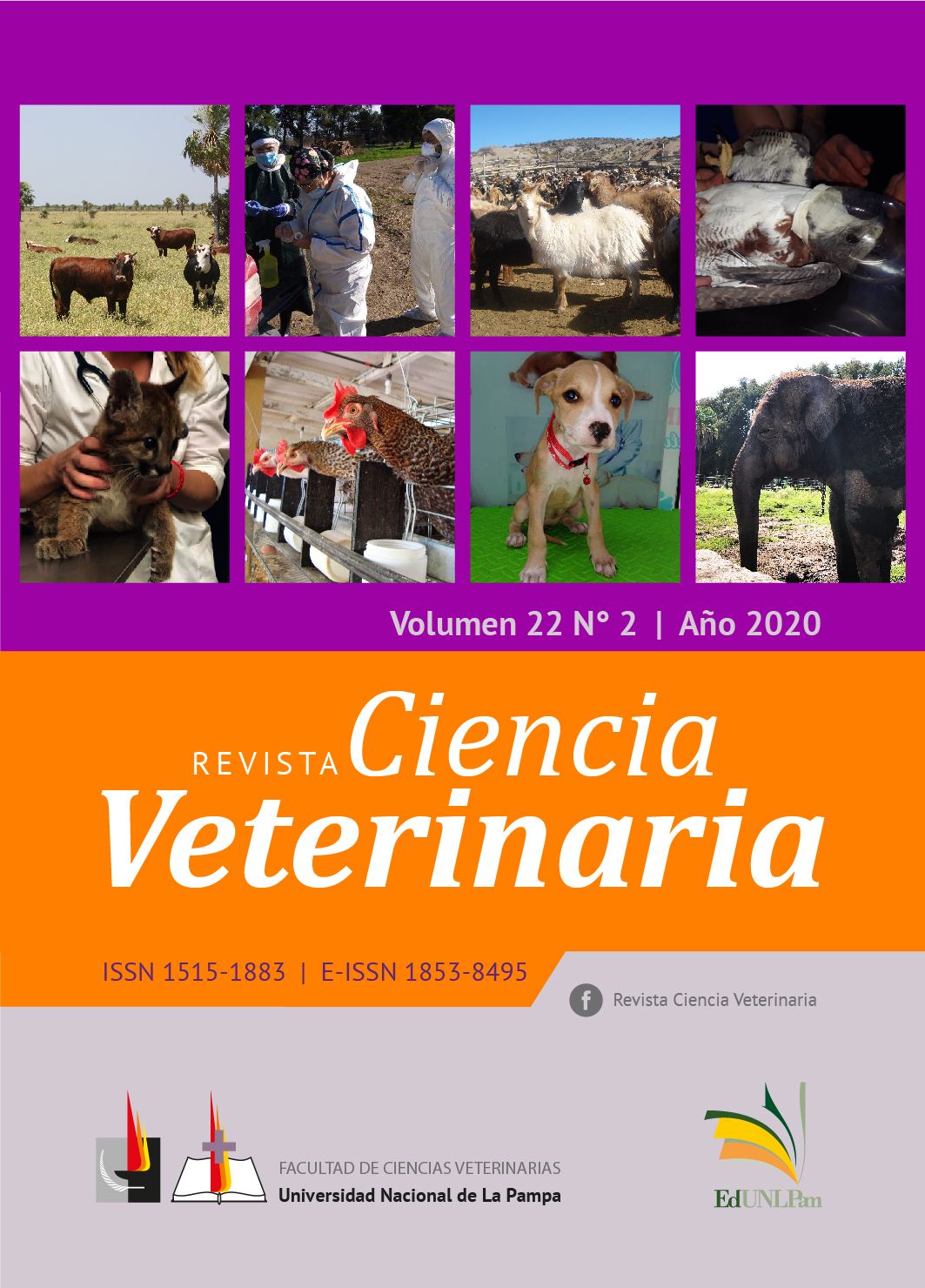Alternative treatment of recurrent skin wound in elephants
DOI:
https://doi.org/10.19137/cienvet-202022207Keywords:
elephant, skin wound, alternative therapy, diatomsAbstract
The relationship between humans and elephants dates back thousands of years. Throughout this history, much has been learned about the management of these giants, especially in terms of behavior, health, nutrition, among other basic needs that contribute to their well-being. This made it go from being a simple tool to part of a working team. One of the main problems that can be seen in elephants kept in captivity are the skin lesions caused during their daily activities. Today, there are several works and manuals that describe the steps to follow when handling a skin wound, especially with regard to recurrent wounds in these animals, whose skin has very particular characteristics. The protocols are based on surgical procedures and systemic antibiotic therapies. The problem that arises with these procedures is the difficulty of finding suitable personnel to carry out these procedures and the drugs indicated for this purpose. The objective of this work is not only to show that there is an alternative therapy to the management of cutaneous wounds in elephants, based on the use of peloids, the main component of which is diatoms but to highlight the importance of adapting to the natural behavior of the animal so that the therapy has positive results as well.
Downloads
References
Kharel. The challenges of managing domesticated Asian elephants in Nepal. In: Giants in Our Hands. Proceedings of the International Workshop on the Domesticated Asian Elephant. Bankok, Thialand.2001; pp 103-108.
Sukklad S. A retrospective study of elephant wound, wound management from Thai
veterinarians, Proceedings of AZWMP ChulalongkornUni. Fac. of Vet. Sc. Bangkok,
Thailand.2006; 26-29.
Buragohain A. Prevalence of wound infection in wild and captive elephants (Elephas maximus) of Assam. J. Entomol. Zool. Stud. 2019; 171-174.
Sarma K. Occupational injuries and work-related diseases in working elephants in
India’s north east, paper published in Compendium; International elephant conservation and research symposium, Copenhagen Zoo.2006.
Benz Andreas & Geyer, Hans & Eilenberger K. La uña del elefante: Morfología macroscópica y microscópica considerando sus cambios patólogicos. 2005. (tesis de doctorado) Universidad de Zurich.
Kadirvelu S. Clinical management of chronic abscess in an Asian elephant (Elephas
maximus). J. Adv.Vet. Anim. Res.2014; 1(2): 73-74.
Sajesh MG. Traumatic injuries in the working elephants of Assam and Kerela. A comparative study M. V. Sc. Thesis, Assam Agricultural University, Khanapara, 2009.
Samshul A. Clinical management of traumatic injury in captive Asian elephants by
bio-debridement (elephas maximus) case report of four captive Asian elephants. Veterinary Practitioner.2017; Vol. 18(2).
Shrestha S, Gairhe K. Veterinary problems of geographical concern, Biology, medicine and surgery of elephants. Iowa Blackwell publishing.2006; pp 465-468.
Kamal P Gairhe. Veterinary Care and Breeding of Elephants in Nepal. Short Communication. Gajah.2012;37 27-30.
Mikota S. Medical management of the publishing elephant.1994. Indira Publishing
House, Michigan, USA.
Gogoi P. Therapeutic management of bacterial dermatitis in captive Asian elephant (Elephas maximus). J. Entomol. Zool. Stud. 2017; 5(5):265-267.
Pargas F. Enfermería en la Medicina Natural y Tradicional. 2000. La Habana: Ciencias Médicas: 170-210.
Rodriguez Ramírez R. Efectos del peloide en la cicatrización de heridas abdominales quirúrgicas dehiscentes. MEDISAN.2005; 9(3).
Álvarez A. Mecanismo de acción de las aguas mineromedicinales. Rev Cubana Med
Gen Integr.1993; 9(2):198-201.
Rodriguez RR, González Tuero JH. Métodos alternativos para el tratamiento de pacientes con heridas infectadas. MEDISAN.2011; vol.15, (4) pp.503-514.
Basualdo JA, Schell CM, Sparo MD, Grenóvero MS, Giacomino MI, Belderrain AR, et
al. Estudio de la actividad antimicrobiana del fango termal de Copahue (Neuquén,
Argentina). Cienc Docencia Tecnol.2011; 43:217–235.
Rodríguez R y col. Peloidoterapia en las heridas quirúrgicas infectadas. MEDISAN.
; 8(3).
Tolomio C, Ceschi-Berrini C, Moschin E, Galzigna L. Colonization by diatoms and antirheumatic activity of thermal mud. Cell Biochem Funct.1999;17(1):29‐33.
Galzigna, L. Thermal Mud-Pack as an Anti-Inflammatory Treatment, Biomed Pharmacother. 1998;52(9):408-9.
Ortega, E. Anti-inflammatory effect as a mechanism of effectiveness underlying the clinical benefits of pelotherapy in osteoarthritis patients: regulation of the altered inflammatory and stress feedback response. Int J Biometeorol.2017; 61 pp. 1777–1785.
García-Villén F, Souza IMS, de Melo Barbosa R, Iborra CV. Current Pharmaceutical Design. 2020;26(6), pp. 621-641.
Centini M, Tredici MR, Biondi N, Buonocore A, Maffei Facino R, Anselmi C. Thermal
mud maturation: organic matter and biological activity. Int J Cosmet Sci.2015;
(3):339–347.
Downloads
Published
How to Cite
Issue
Section
License
Al momento de enviar sus contribuciones, los colaboradores deberán declarar , de manera fehaciente, que poseen el permiso del archivo o repositorio donde se obtuvieron los documentos que se anexan al trabajo, cualquiera sea su formato (manuscritos inéditos, imágenes, archivos audiovisuales, etc.), permiso que los autoriza a publicarlos y reproducirlos, liberando a la revista y sus editores de toda responsabilidad o reclamo de terceros , los autores deben adherir a la licencia Creative Commons denominada “Atribución - No Comercial CC BY-NC-SA”, mediante la cual el autor permite copiar, reproducir, distribuir, comunicar públicamente la obra y generar obras derivadas, siempre y cuando se cite y reconozca al autor original. No se permite, sin embargo, utilizar la obra con fines comerciales.







4.png)


7.png)



